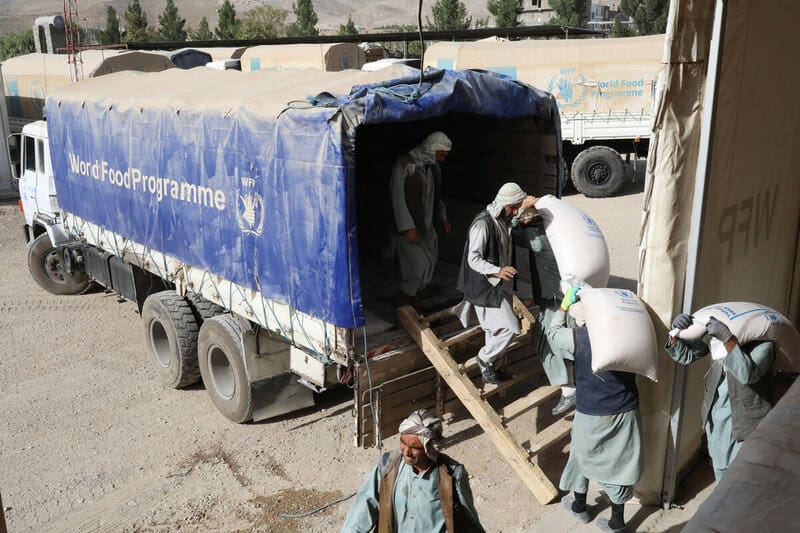“Things Were Already Desperate”: Afghanistan Set to Become the World’s Worst Humanitarian Crisis

The United Nations World Food Programme (WFP) is calling for action as new United Nations study estimates 22.8 million Afghans could face severe hunger during winter months, with 8.7 million people at emergency levels.
Afghanistan is becoming the world’s largest humanitarian crisis, with needs surpassing those in Ethiopia, South Sudan, Syria and Yemen, according to figures released this week.

A mother and her child at a nutrition clinic run by the U.N. World Food Programme and UNICEF at a camp for displaced people near Herat.
With a harsh winter on its way, the latest IPC assessment (the Integrated Food Security Phase Classification), a global standard for assessing food insecurity, found 22.8 million people could face severe hunger, including 8.7 million facing emergency levels of hunger – a record in the ten years the UN has been conducting IPC analyses in the country.
The U.N. World Food Programme said via a press release: ”We cannot allow Afghanistan to be a collective failure – the international community must prevent the crisis from becoming a catastrophe.”

“Children and older people are at particular risk,” said Jean-Martin Bauer, U.N. World Food Programme food security specialist.
“Things were already desperate, and now continuing drought, escalating displacement, the collapse of public services and a deepening economic crisis have driven the entire country to the precipice.”
Since the withdrawal of international forces in August, the fall of the Afghan government and the Taliban takeover, the country has been in freefall. According to the report, job losses, lack of cash and soaring prices have pushed the humanitarian crisis to a new high and creating a new class of hungry. For the first time, urban residents are suffering from hunger at similar rates to rural communities, which have been ravaged by drought twice in the past three years. Across cities, towns and villages, virtually no family can afford sufficient food, according to recent U.N. World Food Programme surveys.
Testimonies collected by the U.N. World Food Programme included that of one man, Ishaq, in Bamyan province. He said: “Before, I had work and managed to bring home some food.”
“It was not much, but we somehow managed. But now there is no work at all, and we can’t afford to get part of our food. We manage with very simple food including bread and tea, potato soup … so that our life moves forward until these problems get solved.”

Food rations consist of wheat flour, peas, oil and salt – more is needed to see people through the winter.
Thankfully, the U.N. World Food Programme has been making inroads in addressing this rising hunger.
“Last month, U.N. World Food Programme Afghanistan managed to feed 4 million people and is on track to feed 5 million, which is fantastic considering they were around 1 million per month for much of the year,” said Jean-Martin Bauer, a U.N. World Food Programme food security specialist who worked on the report.
However, current funding is a drop in the ocean and a crippling drought poses further challenges. With COP26 beginning in Glasgow this Friday, Bauer highlights the effects of the “double-dip” of the La Niña climate phenomenon, which is causing the worst drought Afghanistan has seen in years.
“We had one [dip] for the past year which affected the winter crops, and then we’ve got another La Niña going on now when the planting for the winter crops is taking place,” Bauer says.

“The majority of Afghans will need humanitarian aid … the entire country will need support and it’s urgent,” Bauer says.
“No one wants to see Afghan children die as a result of, you know, politics, essentially. This is one of the worst food crises in the world in terms of numbers, in terms of severity. It’s got different causes, but it’s basically two tracks… what’s happened on the political side, but also what’s happening on the agrometeorology [or climate change] side.
“With no assistance, people will take years to get back on their feet – we might be sowing the seeds of bigger problems if we don’t respond now,” Bauer concluded.
This story originally appeared on WFP’s Stories on October 25, 2021 and was written by WFP Staff.
To learn more about our programming in Afghanistan, click here.




